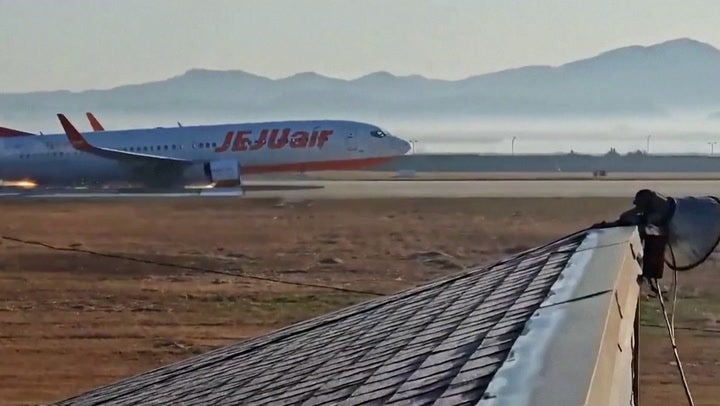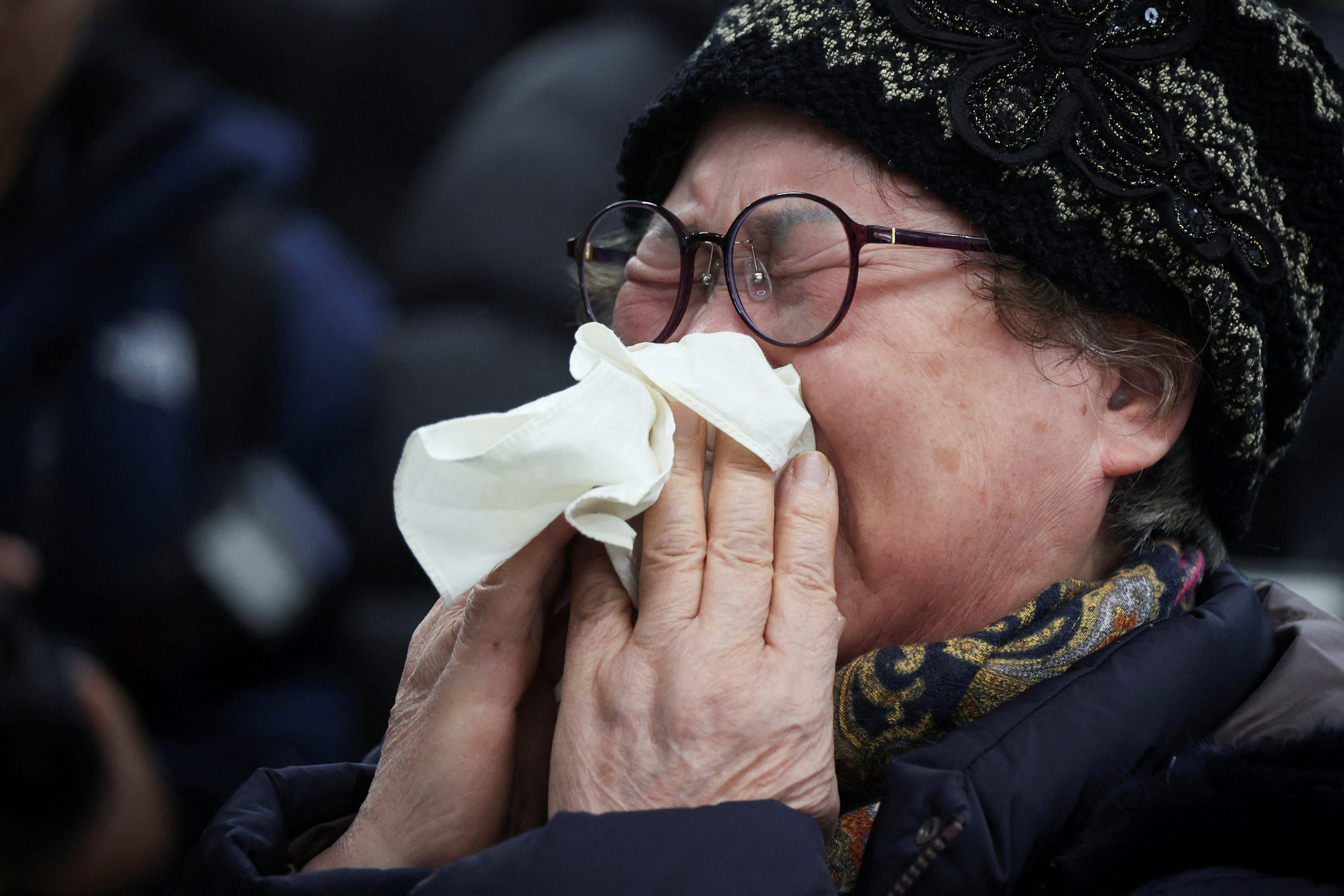Why did the South Korean Jeju Air flight crash, killing 179? Experts question bird strike claims
Aviation specialists question how a collision with birds could have been the sole cause of such a crash
As an investigation begins into the deadliest plane crash on South Korean soil, experts have questioned whether a bird strike could have caused the undercarriage to fail.
All but two of the 181 people aboard Jeju Air Flight 7C2216 died on Sunday morning after the plane embarked on an unsuccessful emergency landing at South Korea’s Maun International airport. It had flown in from the Thai capital of Bangkok, carrying dozens of Christmas holidaymakers.
Among the passengers were five children under the age of 10, including a three year old.
Horrifying footage showed the plane skidding across the runway before colliding with a brick wall and bursting into flames. The only two survivors were two crew members who had been seated at the back of the plane.
For the latest on the plane crash investigation - click here to visit our blog
The incident resulted in the highest number of fatalities from a plane crash on South Korean soil in the country’s history, which has a strong flight safety record over the last two decades.
“Why didn’t fire tenders lay foam on the runway? Why weren’t they in attendance when the plane touched down? And why did the aircraft touch down so far down the runway? And why was there a brick wall at the end of the runway?” said Geoffrey Thomas, editor of Airline News.

South Korean officials said they were investigating the cause of the crash, including a possible bird strike, as it emerged that air traffic controllers had warned the pilots of the risk of a collision just three minutes before the plane crashed into the runway. A minute after the warning, the pilots issued a mayday.
According to local media, a passenger on the flight sent a text message to a family member saying that a bird “was stuck in the wing” and that the plane couldn’t land. “Should I leave my last words?” the passenger then wrote.
Under global aviation rules, South Korea will lead a civil investigation into the crash and automatically involve the National Transportation Safety Board in the United States where the plane was designed and built. Jeju Air claimed the crash was not due to “any maintenance issues”.
The flight data recorder was found at 1130 local time (0230 GMT), about two and a half hours after the crash, and the cockpit voice recorder was found at 1424, according to South Korea’s transport ministry.
Investigators later told South Korea’s Yonhap news agency, however, that the voice recorder was damaged and that it could take up to a month to decode as a result.
Mr Thomas described the flight data recorder as the “heartbeat of the airplane” that should give clues as to how the crash unfolded. There are likely to be several reasons for the crash.
Experts, however, said it seemed unlikely a bird strike would have been the sole cause of the landing gear malfunctioning.
“A bird strike is not unusual, problems with an undercarriage are not unusual. Bird strikes happen far more often, but typically they don’t cause the loss of an airplane by themselves,” Mr Thomas said.
Australian airline safety expert Geoffrey Dell said: “I’ve never seen a bird strike prevent the landing gear from being extended.”
A bird strike could have impacted the CFM International engines if a flock had been sucked into them, but that would not have shut them down straightaway, giving the pilots some time to deal with the situation, Mr Dell said.

The experts also questioned why the pilots did not have time to decelerate, as is standard, during an emergency belly-landing.
Typically, in a belly-landing, “you are going to land on your engines and you’re going to have a bumpy ride,” Thomas said.
“You come in with minimum fuel, you have fire tenders in attendance, covering the runway with foam and you land at the furthest end of the runway and usually it ends up being an OK situation.”
Joo Jong-wan, deputy transport minister, dismissed concerns about the use of a brick wall as a safety measure, saying both ends of the runway have “safety zones with green buffer areas before reaching the outer wall”.
He added that the airport was designed “according to standard aviation safety guidelines, even if the wall may appear closer than it actually is”.
The flight captain had worked at that rank since 2019 and had logged 6,823 flight hours, the transport ministry said. The first officer had worked at that rank since 2023 and had logged approximately 1,650 flight hours.
The Boeing model involved in the crash, a 737-800, is one of the world’s most flown airliners with a generally strong safety record and was developed well before the MAX variant involved in a recent Boeing safety crisis.
Join our commenting forum
Join thought-provoking conversations, follow other Independent readers and see their replies
Comments
Bookmark popover
Removed from bookmarks